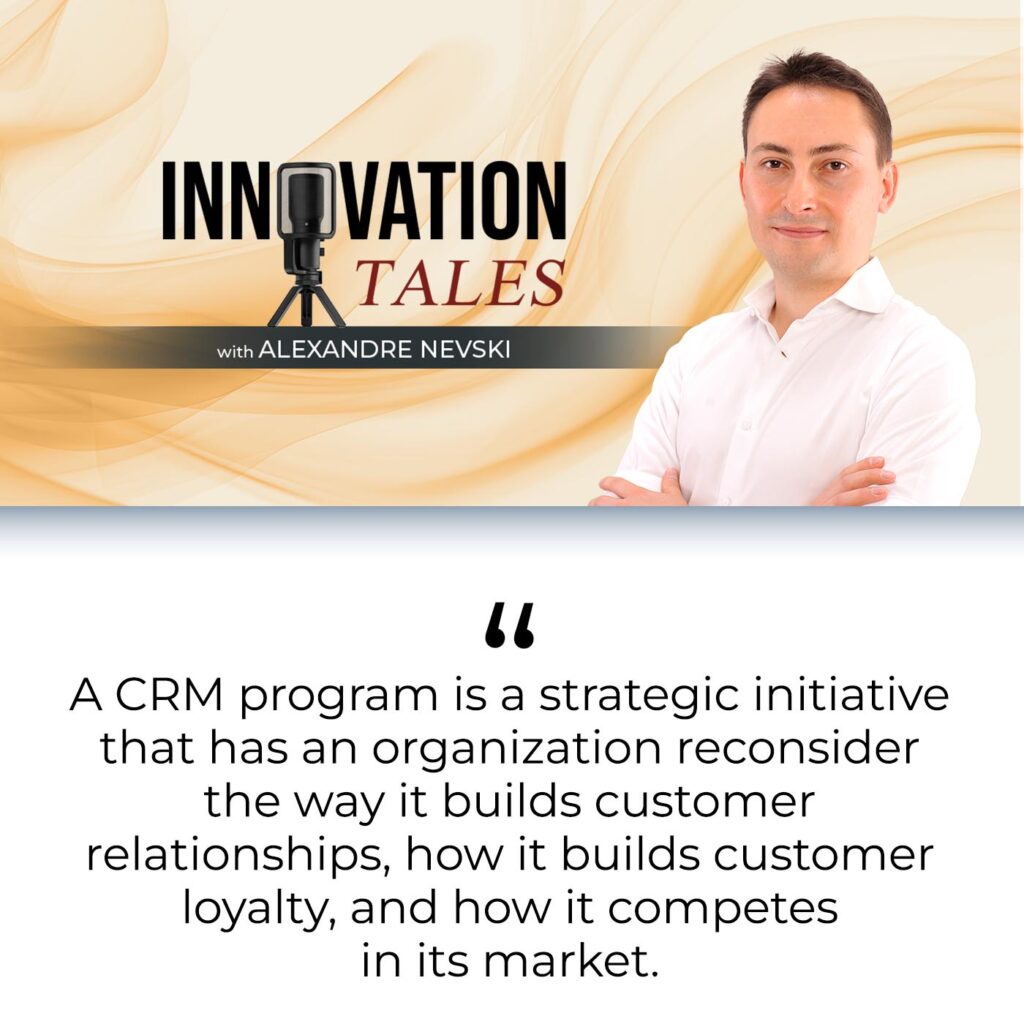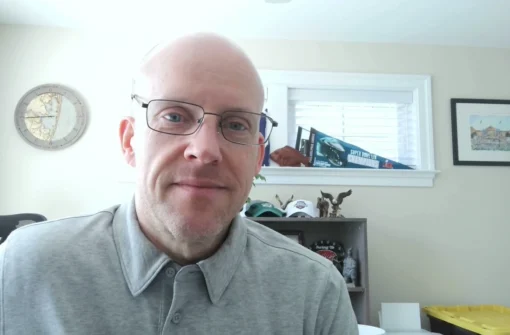
Transforming The Contact Center: The Untold Story Behind Every Customer Call
For most people, making a customer call is an extremely frustrating experience. It is often plagued with disconnected transfers, loss of context, or poor agent response. Why do these things keep on happening? Alexandre Nevski offers the truth about these customer calls by offering a glimpse of what is really happening behind the scenes of contact centers. He explains how these calls are not just about customer satisfaction and conversion rates, but also crafting better teamwork and developing smoother business operations. Alexandre explains how to use artificial intelligence in automating processes and the importance of having a reliable CRM program to deeply improve how customer calls are executed.
Pega® is a trademark of Pegasystems Inc. Please visit https://www.pega.com to learn more.
Transcript
What do you feel when you think about the last time you had to contact a vendor by phone? Hopefully, it was a pleasant experience, but chances are at least some of you were not so lucky. Whether due to disconnected transfers, loss of context, or insufficient agent training, it can get very frustrating. You may even wonder, are they doing it on purpose? Stick around for this unique opportunity to look at the experience from the other side. What challenges do organizations face in a hyper-connected landscape, and what are the human factors involved? We’ll start with a story inspired by my own experience.
Afterwards, we’ll take a few minutes, as usual, to define some key terms specific to contact centers, and we’ll finish with a discussion of strategies that might be useful to consider if you decide to embark on a customer experience initiative of your own. As a disclaimer, the story in this episode is inspired by real events, but to protect the privacy of the individuals involved, and to honor confidentiality agreements, it is not an accurate description of any one organization. Rather, I’ve combined several projects into a fictitious tale with dramatic elements designed to illustrate this topic. Any resemblance to actual persons or events is purely coincidental.
Echoes Of Innovation
Echos of innovation. Our story begins at a corporate retreat taking place at a beautiful chalet in the mountains, because, of course, nothing says effective strategic planning like a breathtaking view. The spacious dining room had been turned into a makeshift boardroom for a group of executives. They run a mid-sized e-commerce company and have come together to plan their strategy for the next two years. They had all cleared their schedules for the next five days and stepped away from their daily work to focus on the bigger picture. The hero of our story is Zoe, the head of customer service. Imagine someone who is always the first one to arrive and the last one to leave, driven by a deep commitment to her team and her work.
Zoe was the kind of leader who knew every agent’s name, remembered their kid’s birthday, and even had a framed Customer First motto on her desk. I had been working closely with her as a consultant, helping to tackle the challenges faced by her team. She saw this retreat as an opportunity to look into the bigger issues affecting the whole company. The first two days had gone smoothly, but by day three, the clock was ticking, and the mood had started to change. The IT roadmap was up for discussion, and tensions had risen over the priorities. When Zoe thought back to that meeting, she told me how the atmosphere had become tense.
The stakes were high, and she knew she had to make her point clearly. She spoke up, drawing everyone’s attention to some troubling data. Despite all the resources they had poured into customer initiatives, the numbers were showing that customer churn was still rising. More than 10% of their customers had switched to competitors. If they didn’t double down on improving customer experience, Zoe warned, they could lose even more. It was a turning point.
She could see it, but would the others? “We’ve already poured plenty of resources into customer satisfaction,” argued Diego. The head of marketing was the kind of guy who always had a fresh cup of coffee in his hand, strong, black, no sugar, and half a dozen reports under his arm. He was an optimist who believed that every campaign had the potential to be the one. Experience had taught him to be cautious. He reminded the team how the recent 360-degree view project hadn’t delivered what they had hoped for.
When that initiative fell short of expectations, it only strengthened his belief that real growth lay elsewhere. As the discussion went on, it became clear they were stuck. Zoe was firm that the wrong marketing approach could harm the brand and confuse both new prospects and existing customers. For his part, Diego doubted that they could improve the customer experience without spending a lot more money. Their different views highlighted the growing divide among the executives, setting the stage for the challenges ahead. As Diego’s words echoed in her mind, Zoe couldn’t help but think back to the early days of the 360-degree view project.
Wasn’t this supposed to be the solution they needed? A way to give agents a complete view of the customer so that they could resolve issues faster and more effectively? The clock had been ticking for months, and everyone was eager to see results. As soon as the feature went live, cracks began to show. Instead of speeding things up, it was actually slowing everything down. Agents were buried under a flood of data, scrambling to make sense of it all, while customers waited impatiently on the line. Every extra second felt like an eternity.
This wasn’t just a setback, it was a serious problem that was starting to impact the bottom line. Zoe had pushed hard for this project, convinced it was the right move. As the days went by and handling times kept climbing, she began to question whether her drive to innovate had blinded her to the practical realities faced by her team. They weren’t just numbers on the screen, they were real moments of frustration for the agents and their customers. The pressure was on, and Zoe knew she had to find a way to turn things around, and fast. How do you really gauge the effectiveness of a customer service team? It all boils down to a few key metrics.
Customer satisfaction is measured through surveys sent out after some of the interactions. The time it takes to handle a call, that’s average handling time, a key metric of agent productivity. There is first contact resolution, which measures how often a customer issue is resolved on the first interaction. It’s a major factor in reducing customer frustration. Imagine being an agent just starting out. It’s a long way to proficiency.
First, there’s formal training, and then a few weeks of mentorship, where new agents shadow veterans to learn the tricks of the trade. They move on to handling written customer requests, emails, contact forms, the occasional snail mail. Once they get the hang of that, they move on to the next challenge, live calls. This is where the pressure really ramps up. Call centers are loud, fast-paced environments where every second counts. Zoe knew the challenges her team faced inside and out.
Call centers are loud, fast-paced environments where every second counts.
She’d been with the company since the beginning, and it was always a struggle to keep a pleasant tone with angry customers, especially when the internal systems seemed to work against them. The constant churn of employees was something that she brought up often. This job was tough, and many agents just couldn’t handle the pressure for long. The biggest headache? Customers would often reach out to Zoe’s team for problems that they couldn’t even fix. For example, when a new customer would hit a snag attempting to create an account on the website, they would call customer service. That system was managed by the sales department, so all her agents could really do was provide generic advice before passing the problem along to sales.
You can imagine how frustrating this was for everyone involved. There was outbound marketing. This was the classic strategy, send out as many promotions as you can and hope that something sticks. The marketing department swore by it as a way to bring in new prospects and win back old customers. When the inevitable issues cropped up, the calls landed squarely in Zoe’s department.
As she explained to me, without access to the campaign details, her agents were left scrambling for answers. Before we go any further, let’s consider Diego’s perspective. As the newest member of the executive team, he was brought in for his marketing expertise with the goal of driving revenue and expanding the company’s reach. Diego believed that outbound marketing was the key to achieving that. He saw it as a powerful tool to reach new customers, and he was determined to make it work. Diego wasn’t naive, though. At his last company, a similar campaign had struggled. Conversion rates didn’t live up to expectations, and he had to work really hard to rebuild customer trust. He saw that as valuable insight.
He acknowledged Zoe’s concerns but was committed to refining the approach rather than abandoning it. In my conversations with Diego, we explored various approaches, but he always circled back to outbound marketing. For him, it wasn’t just about the numbers. It was about scale, reaching new customers, and driving real growth. Yes, the stakes were high, but Diego was confident that if done right, this approach would succeed. Diego’s concerns were part of a larger ongoing struggle within the company.
Outbound marketing is not just about the numbers. It is also about scale, reaching new customers, and driving real growth.
As the retreat approached, Zoe and I had a number of in-depth discussions about the obstacles that her team was up against. The 360-degree view project hadn’t quite hit the mark. In fact, it was the main reason I had been invited to assist, to help them harness the full potential of their CRM, their customer relationship management system. In our talks, we explored the exact issues the agents were encountering. The new feature was supposed to streamline their work, but instead, it had overwhelmed them. Was there a way to lighten their load? We began considering options like automating the data analysis and guiding the agents with recommended actions.
At the same time, something else was still missing. The 360-degree view had pulled together customer data, but critical elements like marketing campaign details were still out of reach. How much longer could they go before addressing that gap? Zoe was realistic about the challenges ahead. She knew resources were tight and IT projects had a habit of dragging on. She would have to choose. Would it be integration with marketing data or automating the processes that were bogging down her team? Back in the boardroom, tensions reached their peak.
I wasn’t there to see it firsthand, but from what Zoe later told me, the atmosphere had become supercharged. Diego and she were deep in debate. He was convinced that outbound marketing was key to driving revenue, while she was equally firm that automating the agent experience was crucial to address the customer satisfaction issue. It wasn’t a sudden revelation, but rather a gradual shift in Zoe’s thinking. Could there be a way to satisfy them both? Eventually, the idea took shape, a way to bridge the gap between their priorities. By configuring the CRM to include marketing data in its recommendations, agents could offer relevant promotions during customer interactions.
A win-win. Diego recognized the potential of this approach, but I can only imagine the questions running through his mind. Would this really work? Could he trust a shift in strategy? A full pivot away from outbound marketing wasn’t something that he was ready to commit to, but a pilot, a small-scale test, gave him the chance to explore the idea without risking everything. The next two years brought a noticeable shift in the company’s pace. Decisions taken at the retreat quickly turned into actions. Getting the inbound marketing pilot up and running wasn’t without its challenges.
The initial rollout hit a few bumps, technical glitches, misaligned processes, and the inevitable pushback from those wary of change. Still, in just three months, it was live. They weren’t just talking about change, they were making it happen. The results? You’ve probably guessed that both customer satisfaction and conversion rates went up. The early challenges did not disappear overnight, but progress was undeniable. Zoe and Diego knew they couldn’t stop there, so they joined forces, pushed for a broader rollout, and scaled the initiative across the entire company. IT was busier than ever.
Resources once dedicated to outbound marketing were redirected to this new collaboration, but there was an even bigger ripple effect. Other departments took notice, and soon there were half a dozen integration projects all vying for attention. As momentum continued to build, the head of sales recognized the value of expanding the initiative. He introduced inbound marketing to the web channel, reaching customers where they were. The biggest leap came when he partnered with Zoe to upgrade the site’s chat feature. By linking with the CRM, they introduced chatbots that were capable of handling routine inquiries while seamlessly passing complex cases to human agents.
The smart use of technology ensured that customers would receive timely support, while agents could focus on delivering high-quality service in the moments that mattered. Two years had passed since that crucial retreat, and as the next one loomed, Zoe felt a renewed sense of optimism. She looked forward to a more collaborative atmosphere, so different from the combative debates that had marked the previous retreat. When we spoke, she reflected on those tense moments and how the progress they’d made since then had brought the team of executives closer together. In the days leading up to the retreat, Zoe found time between her many responsibilities to work on her presentation. She highlighted the concrete results the company had achieved.

Improved customer satisfaction, reduced average handling times, and a boost in first contact resolution. The data was compelling, but as she was wrapping up the slides, a new thought crept in. What’s next? We had discussed how many organizations were starting to explore use cases for artificial intelligence, looking at ways to further automate processes and even offer proactive service. Zoe felt a mix of excitement and anticipation. This chapter was closing, and the next one would begin soon, but that, as they say, is a story for another time. We’ll define the key terms specific to contact centers in the next segment, and then we’ll focus on practical advice.
Before we move on, if you found this tale of innovation valuable, please like and subscribe to help us grow our audience.
Blueprints Of Innovation
Blueprints of innovation. Let’s try to keep this segment brief and focus on defining the terms that are specific to contact centers that I’ve mentioned in the previous segment. A good place to start would naturally be the customer relationship management system, the CRM. Traditionally, this would be just a database of customers, their accounts, personal business accounts, history of orders, and so on. In modern times, a CRM is often a system that goes beyond that and helps with managing interactions with customers by, for example, bringing the interactions, regardless of the channel they come through, to the same point for resolution.
It’s very desirable for an organization that wants to provide a consistent customer experience to have some sort of common processes and systems for inquiries that might come through phone, a mobile app, email, or chat so that customers don’t end up having to jump through groups because maybe one type of request can be done on one channel but on another channel, they get a different response, and that, of course, creates confusion and frustration. Some CRM vendors, like Pega, might refer to this as an omnichannel service capability. The other term I’ve mentioned that is very popular nowadays with CRM implementations is proactive service.
What is that? Organizations may desire to acquire this capability when they are trying to develop the relationship they have with their customers, moving away from pure transactions and demonstrating to their customers that they understand their needs to a point where they can even predict the reason for the customer contacting the organization. In the case of the Pega CRM, the functionality that enables this proactive service is called next best action, and it uses all of the data available about the customer, such as their interaction history, to propose a set of actions that would be relevant to the customer. For the customer, it’s a very good experience, it’s very personalized. It means that the organization is able, regardless of the channel, to make offers that are specific and relevant to their circumstance, such as a promotion offer, for example.
Innovator’s Playbook
Innovator’s playbook. What are the takeaways from the story? For starters, let’s talk about the 360-degree view. I would advise that bringing all of the data about a customer and their products together in one place, like the CRM, is a very good idea, it’s necessary, but it’s no longer sufficient. With the proliferation of self-service channels and also the changing expectations from customers to have immediate resolution most of the time, automation is key in order to make sense of the data that an organization might have available about their customers. Additionally, I would advise against assigning ownership of the various channels to specific departments, as could have been the case in the past. It’s not a good idea for sales to own the website, it’s not a good idea for marketing to own the outbound email channel, and it’s not a good idea for the contact center to be solely responsible for incoming phone calls.
With the proliferation of self-service channels and the changing expectations from customers for immediate resolutions, automation is key.
Instead, organizations really must make an effort to look at the customer experience end-to-end. The customer expectation is that one can reach a vendor through the channel that is most convenient for the customer and get resolution on the spot immediately, most of the time. Having these disconnected experiences, where one type of request must be formulated on the phone channel and another type of request must be formulated in writing, is holding organizations back in their quest to build brand loyalty. Last but not least, I would say that this is not a good time to limit your ambitions to incremental improvements in agent productivity. Given the advances in technology, especially in artificial intelligence, chances are your competitors are building digital brains that enable customer experiences that are omnichannel, proactive, personalized, and real-time. It is not a good time to do a two-year program to implement a CRM just to get a 360-degree view together to bring all the customer data.

It is necessary, indeed, but do not shy away from more radical changes, those changes that challenge the status quo, organizationally speaking, and look at the customer experience overall, end-to-end, just as I was saying a minute ago. I believe a CRM program is a strategic initiative that has an organization reconsider the way it builds customer relationships, how it builds customer loyalty, and more generally how it competes in its market. That brings us to the end of this episode. While the story was a blend of experiences, it highlights the real challenges people in contact centers face during digital transformation. If you’re watching this on YouTube, don’t forget to like and subscribe, or you can rate and review the show in your favorite podcasting app. We look forward to your feedback.

In the meantime, we have more episodes lined up, so stay tuned for more tales of innovation that inspire, challenge, and transform. Until next time, peace.






